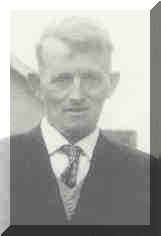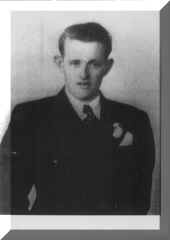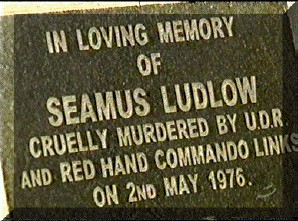The Murder of Seamus Ludlow in County Louth, May 1976. Towards a public inquiry?



The Murder of Seamus Ludlow in County Louth, May 1976. Towards a public inquiry?
|
|
Introduction to the murder of Seamus Ludlow and the official cover-up. Michael Cunningham investigation - 1978 The recent Campaign for Truth and Justice. Irish Victims Commission Report. Ludlow family's questions for the RUC (now the PSNI). Jim J. Kane's letter to the N I Human Rights Commission. Jim J. Kane's letter to the RUC Ludlow Family Letter to Bertie Ahern Other Ludlow Family Sites. |
The Irish Independent, 19 May 1999: New Inquiry to unravel mystery of 1976 murder By Tom Brady Security Editor The Government is to order a full inquiry into the murder of a man who was shot dead by a loyalist gang near his home 23 years ago this month. The inquiry will focus on a recent garda investigation which has concluded that the names of the four prime suspects for the murder of Dundalk man Seamus Ludlow were known since 1979. The suspects were not interviewed by either the gardai or other police forces until last year - despite the intelligence pinpointing their involvement in the crime. The report, which was recently submitted by the gardai to the Government, is likely to pose embarrassing questions for former senior members of the gardai and RUC. The garda findings are expected to be considered shortly by the Cabinet and a decision will then be taken on how the inquiry should be set up and whether the evidence will be heard in public. Riddles But it is thought unlikely that an inquiry into the Ludlow murder will be widened to include the Dublin and Monaghan bombings. A Government decision on how to proceed with that matter will be taken separately. The murder of Mr Ludlow, a 47-year-old forestry worker with no paramilitary connections, in a remote laneway north of Dundalk in 1976 as remained one of the unsolved riddles of the troubles. It was initially blamed on the IRA, but after the investigation failed to make much progress it was suspected locally that Mr Ludlow had stumbled across a British undercover unit operating south of the border and had been shot by them. Police on both sides of the border are now satisfied that Mr Ludlow was randomly selected by a drunken group from the extreme loyalist paramilitary group, the Red Hand Commandos, and that the suspects included two members of the UDR. A new investigation was established last year by Garda Commissioner Pat Byrne who appointed Ted Murphy, now detective chief superintendent in charge of the national drugs unit, to take charge of the fresh inquiries. As a result of new information three suspects were arrested in Co Down early last year and a fourth in England. They were all held in Belfast's Castlereagh detention centre for two days and released without charge. Gardai travelled to Belfast to assist with the inquiries there and the RUC prepared a file for the Northern DPP to determine whether charges should be brought. The garda investigation established, meanwhile, that the names of the four suspects had been handed to the gardai in 1979 and a report including that information was written by the head of the initial probe, a senior officer from garda HQ. That file is understood to have been sent to the offices of five chief superintendents and an assistant commissioner but no action was taken. There is likely to be conflicting evidence from retired members of the force as to why the investigation was not reopened at that stage. The fresh report did not discover any evidence of collusion between the gardai and the RUC on but raised the question of why the 1979 evidence was not acted upon, while finding no fault with the 1976 probe. it will also pose questions for the RUC on why they failed to check the firearms belonging to the UDR members to establish if they were involved in the murder and why suspects were allowed to remain in the regiment until they were able to retire on full pension. One of the suspects claimed last year he had given information to an RUC detective in 1987 and was told; "Forget it, it's political."
I Homepage I I Top I I BIRW Report I I Press Coverage I |